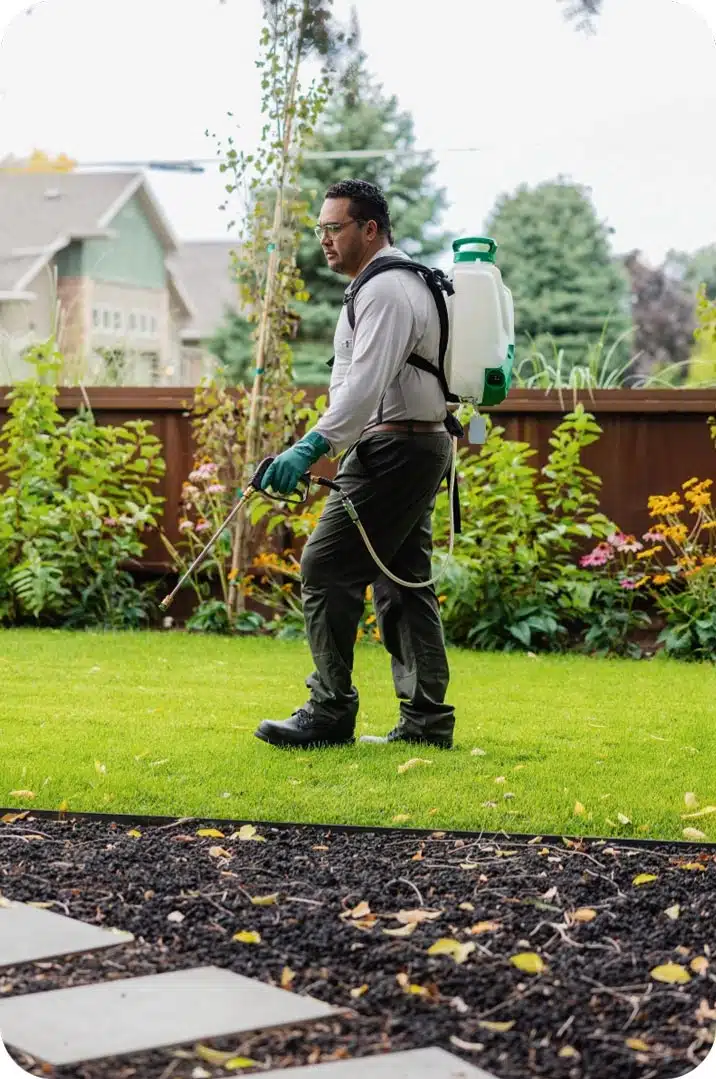Expert A1 Charlotte Bed Bug Exterminator - Quality Solution Ensured
Expert A1 Charlotte Bed Bug Exterminator - Quality Solution Ensured
Blog Article
Bed Insect Treatment Malfunction: Comparing Chemical Vs. Non-Chemical Solutions
In the world of pest control, particularly when managing the relentless problem of bed pests, the option in between chemical and non-chemical treatment options can be a pivotal one. Both techniques supply distinctive advantages and disadvantages, affecting variables such as effectiveness, safety factors to consider, and overall price. By examining the nuanced information of each method, a clearer understanding of which course to seek in addressing a bed insect invasion can be obtained.
Efficiency of Chemical Treatments
Chemical treatments for bed pest infestations have actually been commonly identified for their rapid and potent efficiency in removing these insects. When considering the performance of chemical therapies, it is important to recognize that they can offer a comprehensive and fast remedy to a bed bug trouble. Specialist pest control operators often rely upon pesticides to target bed bugs at various phases of their life cycle, consisting of eggs, adults, and nymphs. These chemicals commonly work by interfering with the bed bugs' nerve system, resulting in paralysis and ultimate death.
Additionally, chemical therapies have the benefit of using residual effects, suggesting that they can remain to get rid of bed insects even after the initial application. This residual action is especially beneficial in combating any potential re-infestations. Furthermore, the rapid activity of chemical therapies can bring relief to people encountering serious bed bug infestations, enabling them to regain control of their living rooms swiftly.
Safety And Security Issues With Chemical Solutions
One important element that calls for cautious factor to consider when using chemical options for bed insect treatment is making sure the safety of owners and the environment. Exposure to certain chemicals used in bed insect therapies can lead to respiratory problems, skin irritation, or various other damaging reactions, specifically in people with pre-existing conditions or sensitivities.
In addition, the ecological influence of chemical solutions is one more considerable consideration. Some chemicals made use of in bed pest therapies may be dangerous to useful insects, wild animals, and communities if they leach into the dirt or water systems. It is vital to utilize chemical treatments judiciously, complying with safety and security guidelines, and considering much less poisonous choices to mitigate these dangers and ensure the effective and risk-free management of bed bug problems.
Advantages of Non-Chemical Techniques
Considering the prospective safety worries and ecological influence associated with chemical services for bed bug treatment, discovering non-chemical methods presents an encouraging choice with numerous distinct benefits. Non-chemical treatments are eco pleasant, as they do not contribute to air or water contamination, making them a sustainable selection for pest control.
In addition, non-chemical options can be efficient in targeting bed bugs, including hard-to-reach locations where chemical therapies may not pass through - A1 pest control charlotte nc bed bugs. Techniques such as warmth treatment, vacuuming, heavy steam cleansing, and mattress encasements offer thorough removal without the use of dangerous chemicals.
Limitations of Non-Chemical Treatments

Additionally, non-chemical treatments typically require multiple applications to accomplish successful obliteration. This can be taxing and might not always guarantee total removal of all bed pests and their eggs, particularly in hard-to-reach or surprise areas.
In addition, the success of non-chemical therapies site here heavily depends on appropriate application and thoroughness, which can be challenging for people without professional proficiency. Poor application of non-chemical methods might cause incomplete elimination, bring about relentless problems and the requirement for added therapies.
As a result, while non-chemical therapies have their advantages, it is necessary to recognize these constraints and consider them when figuring out the most efficient approach for like this handling bed bug invasions.
Cost Contrast: Chemical Vs. Non-Chemical Options
Given the restrictions associated with non-chemical treatments, a necessary aspect to evaluate in the context of bed insect monitoring is the expense contrast between chemical and non-chemical options. In contrast, non-chemical therapies like warm therapy or vapor can be extra expensive, with costs ranging from $1,000 to $6,000 for an entire home. While the preliminary cost of chemical treatments might appear lower, numerous treatments might be required to completely get rid of the problem, potentially boosting the total price.
Final Thought

Thinking about the possible safety worries and environmental influence connected with chemical services for bed insect therapy, checking out non-chemical strategies offers an encouraging choice with several distinctive advantages.Given the limitations connected with non-chemical treatments, an essential aspect to assess in the context of bed pest monitoring is the expense contrast in between chemical and non-chemical options. In contrast, non-chemical treatments like heat therapy or heavy steam can be a lot more pricey, with expenses varying from $1,000 to $6,000 for an entire home. While the first expense of chemical treatments might appear reduced, multiple treatments might be required to fully eradicate the problem, possibly enhancing the general cost.In conclusion, when contrasting chemical and non-chemical bed insect therapy choices, it is essential to consider effectiveness, safety and security, advantages, limitations, and expense.
Report this page